Imagine stepping outside into a personal oasis where comfort meets style, shielded from the sun’s fierce rays. Whether you’re a novice dipping your toes into outdoor projects or a seasoned pro seeking fresh inspiration, “13 Shade Ideas for Your Next Project” is your ticket to creating an inviting, sun-safe retreat. With a blend of creativity and practicality, this guide will help you craft spaces where you can savor every moment of outdoor living.
In this vibrant collection, you’ll uncover ideas that not only enhance your backyard’s beauty but also offer the perfect refuge from the heat. From simple DIY solutions to more sophisticated structures, these shade ideas promise to boost your outdoor experience, making your time outside as enjoyable as it is comfortable. Get ready to transform your space with confidence, turning your vision of a relaxing, shaded haven into a reality.
Incorporate Retractable Awning Structures
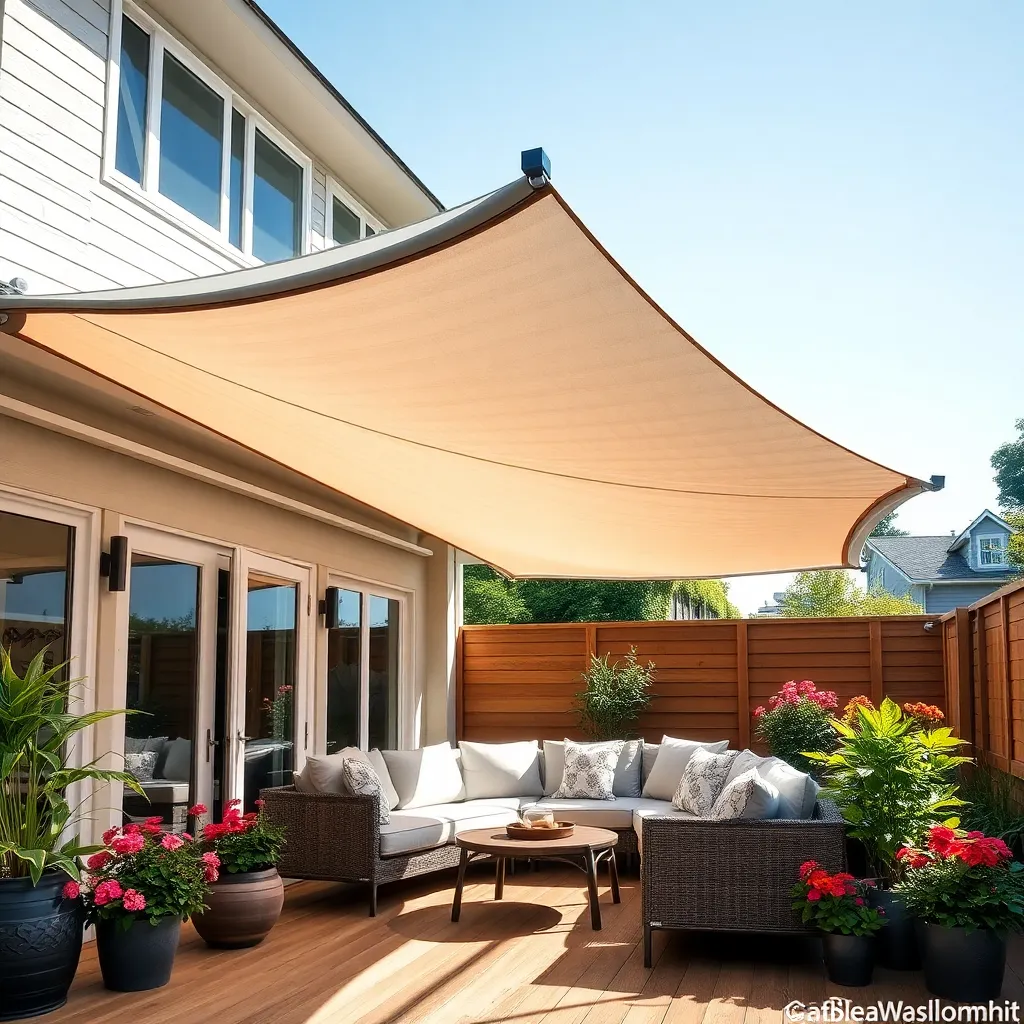
Incorporating a retractable awning offers a versatile solution for creating shade in your outdoor space. Constructed from durable, weather-resistant materials like acrylic or PVC-coated polyester, these awnings provide excellent protection against UV rays and rain. Choose a motorized system for effortless operation, allowing you to extend or retract the awning with ease. For beginners, consider a simple manual model, which is cost-effective and easy to install with basic tools.
For a more advanced setup, integrate smart technology to automate your awning with weather sensors and timers. This feature ensures the awning extends or retracts based on sun exposure or wind conditions, maximizing convenience and safety. When selecting dimensions, aim for an awning width that matches or slightly exceeds your patio or deck’s size, and a projection that covers key seating areas. By coordinating the awning’s color and design with your home’s exterior, you can create a seamless and aesthetically pleasing addition to your outdoor living area.
Install Stylish Pergola Designs
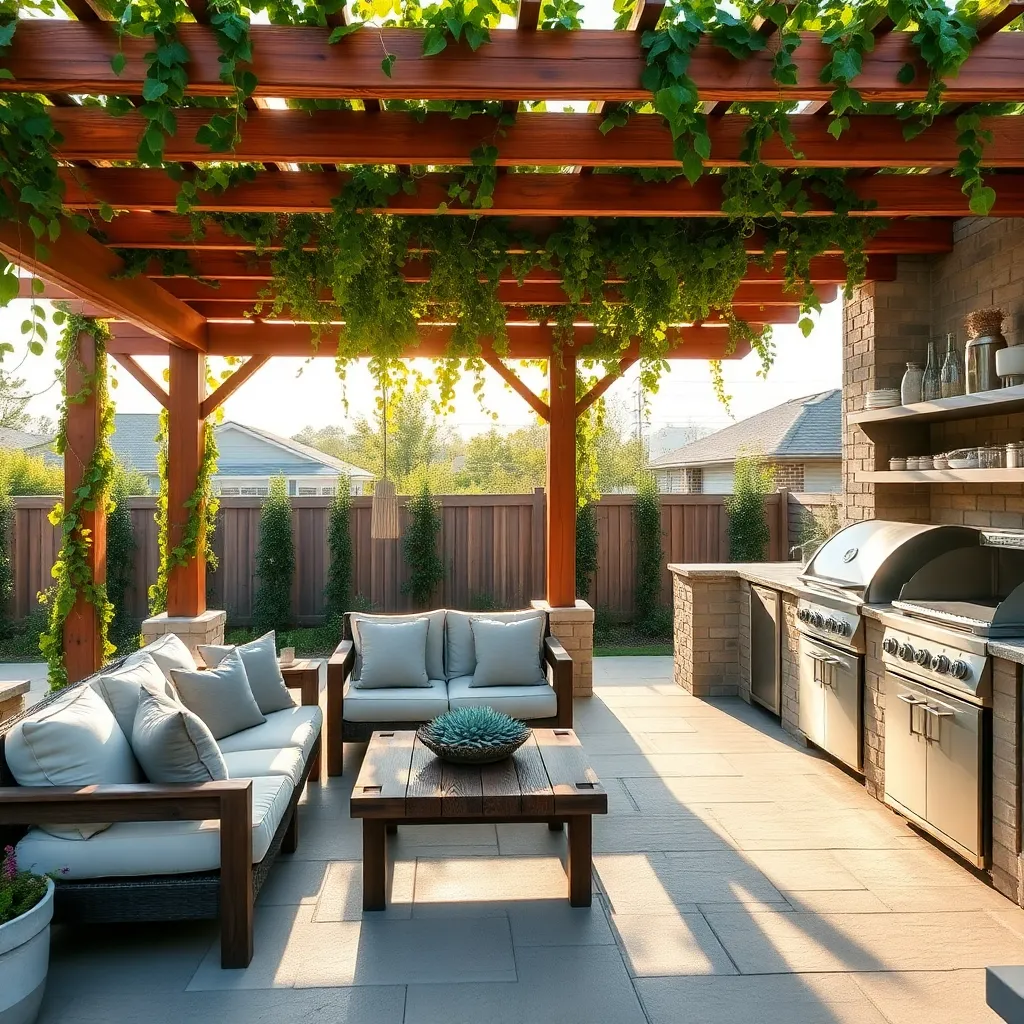
Adding a pergola to your outdoor space can instantly elevate its style and function, providing both shade and a touch of elegance. For beginners, consider using pre-fabricated pergola kits that offer straightforward assembly and typically come in materials like wood, aluminum, or vinyl. Each material has its benefits: wood offers a classic look, aluminum is lightweight and rust-resistant, and vinyl is low-maintenance. Ensure your pergola design complements your home’s architecture, and for a standard size, opt for dimensions around 10×10 feet to suit most backyard spaces.
For those ready to explore more advanced designs, consider incorporating decorative elements like lattice panels or climbing plants such as wisteria or jasmine to add vertical interest and natural shade. To enhance durability, use pressure-treated wood or cedar, which are resistant to decay and insects. You can personalize your pergola with features like built-in lighting or retractable canopies for added versatility. These enhancements not only increase comfort but also extend the usability of your outdoor space into the evening hours, making it a true extension of your home.
Utilize Shade Sail Solutions
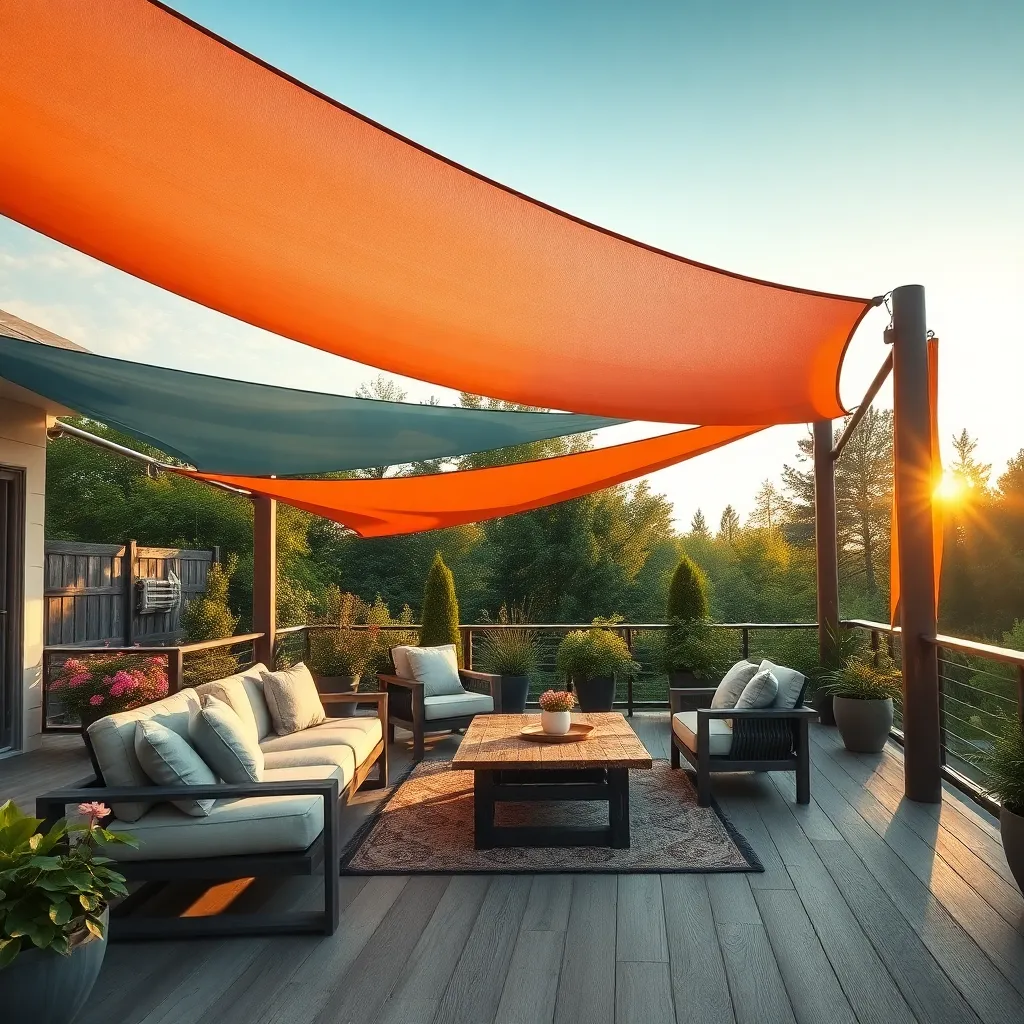
Shade sails are a versatile solution for creating comfortable outdoor spaces, offering both aesthetic appeal and functional benefits. When selecting shade sails, consider materials like high-density polyethylene (HDPE), which provides excellent UV protection and is highly durable. For beginners, start with a simple triangular or rectangular design to cover patios or garden seating areas. Ensure the sails are tensioned properly and anchored securely to withstand various weather conditions. Clearance of at least 8 feet is recommended to allow for ample headspace and airflow.
For those looking to customize their setup, consider layering multiple sails to create dynamic patterns and varying shade levels. Advanced users might explore incorporating color contrasts or experimenting with different shapes to enhance their outdoor aesthetics. Using stainless steel hardware ensures longevity and a sleek finish, while adjustable turnbuckles allow for easy tension adjustments. Remember to periodically check and tighten fittings to maintain the integrity of the installation. By carefully planning your shade sail project, you can transform your outdoor space into a stylish and functional retreat.
Construct a Lush Green Canopy
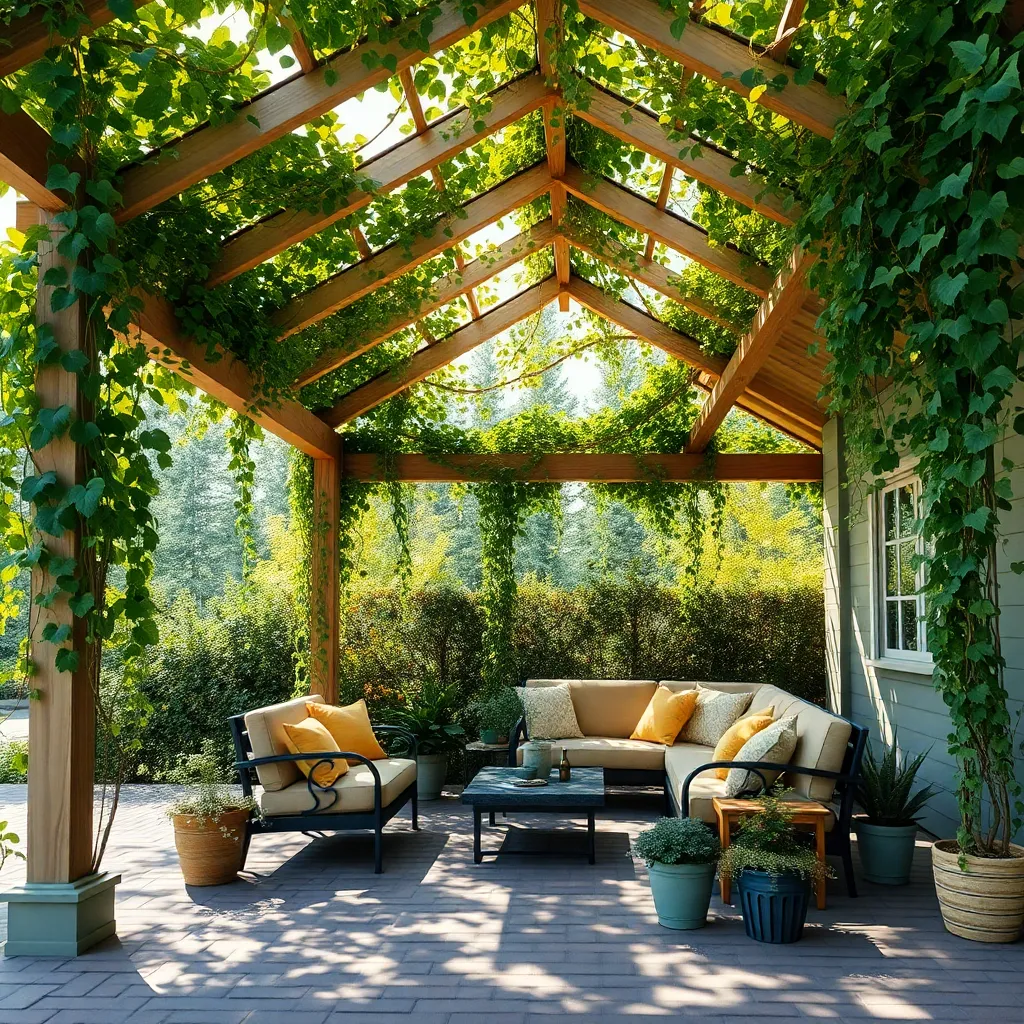
Transform your outdoor space into a tranquil retreat by constructing a lush green canopy. Begin by selecting sturdy, weather-resistant materials such as treated wood or metal for the basic framework. For a beginner-friendly option, consider installing a simple pergola structure, which can be easily adorned with climbing plants like wisteria or grapevines. Choose plants that are well-suited to your climate to ensure they establish quickly and thrive.
For those ready to take on a more advanced project, strategically incorporate elements like trellises or lattice panels into your design to support heavier climbers, such as roses or clematis. Position these structures to maximize natural shade while ensuring sufficient sunlight for plant growth. To enhance the aesthetics, opt for a mix of evergreen and deciduous plants to maintain year-round interest. Regular maintenance, including pruning and training the plants, will be essential to keep your canopy lush and inviting.
Design with Outdoor Umbrella Stands
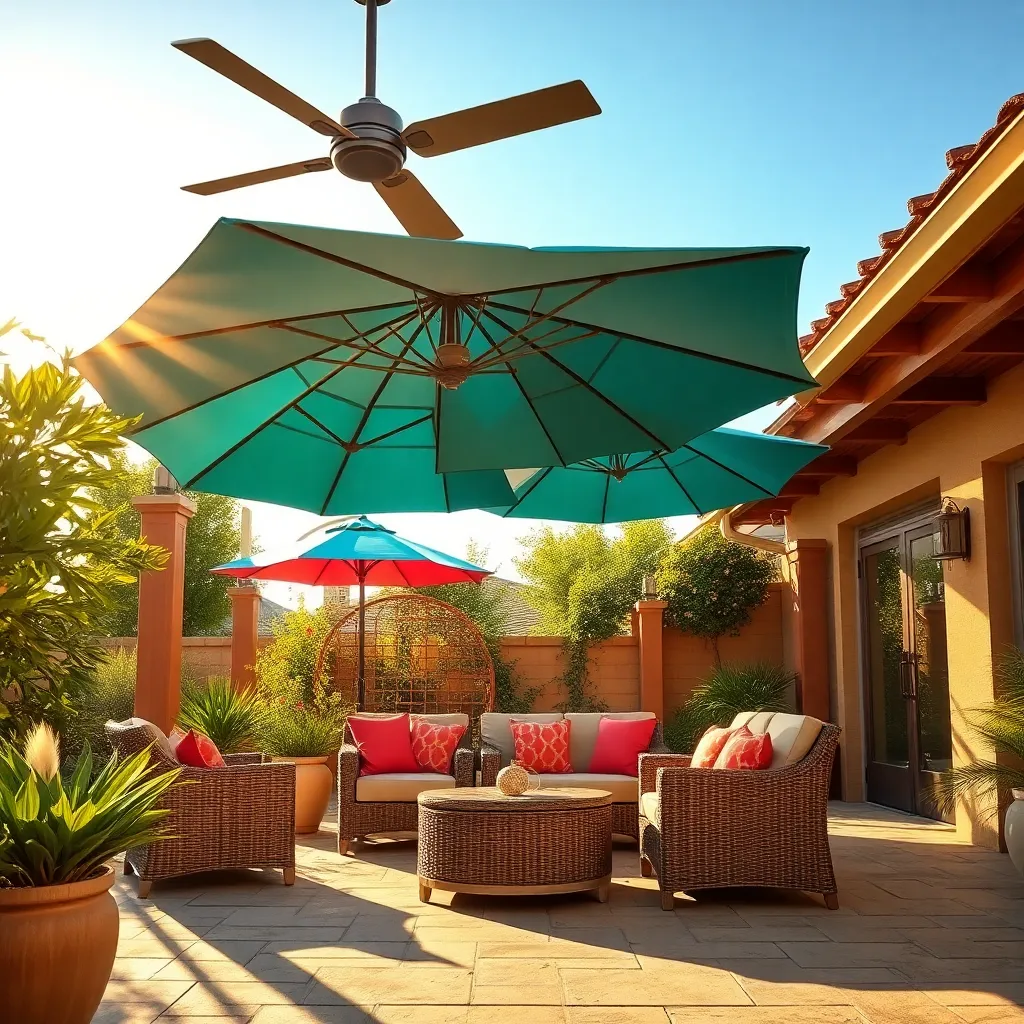
Outdoor umbrella stands offer a versatile solution for creating shade in your garden. Start by selecting a sturdy stand made from durable materials like cast iron or concrete to ensure stability, especially in windy conditions. Positioning is crucial; place the stand in an area that receives direct sunlight, but ensure it’s close enough to your seating area for effective shade. For a more advanced setup, consider adjustable umbrella stands that allow you to tilt the umbrella, providing flexible shade coverage throughout the day.
For a stylish touch, choose an umbrella design that complements your outdoor decor. Opt for umbrellas with UV-resistant fabric to protect against sun damage and fading. Consider size and shape; a larger canopy provides more shade, but ensure your space can accommodate it without overcrowding. If you’re looking to add an extra layer of convenience, explore stands with integrated wheels for easy relocation, allowing you to adjust the shade area as needed. With the right setup, your outdoor umbrella stand can be both a functional and attractive addition to your garden space.
Plant Fast-Growing Shade Trees
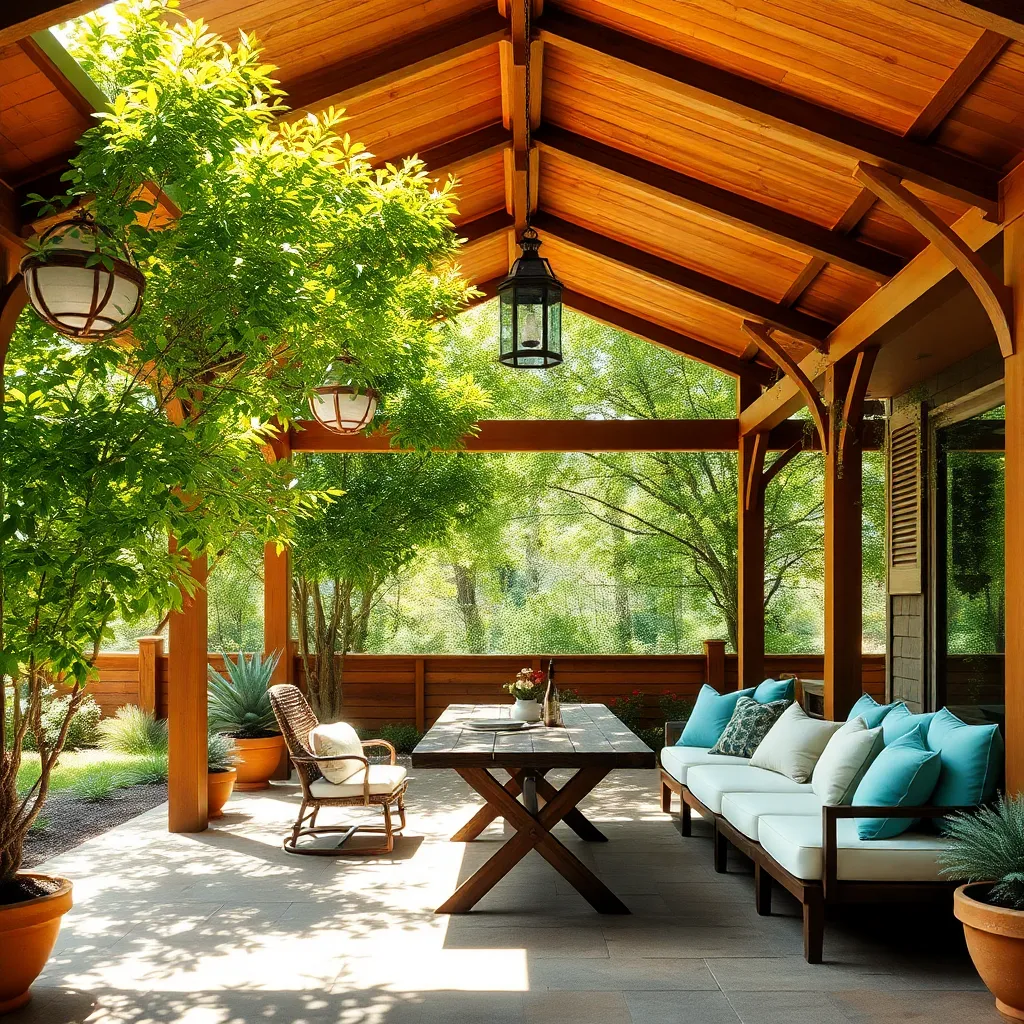
Planting fast-growing shade trees is a fantastic way to create a natural, cooling canopy in your outdoor space. Species like the American Sycamore, Hybrid Poplar, and Northern Red Oak are excellent choices for quick growth and dense foliage. When selecting trees, consider their mature height and spread to ensure they fit comfortably in your landscape. Plant them at least 15-20 feet apart to allow enough room for growth and to prevent root crowding, which can impede their development.
Begin by preparing the soil with compost and selecting a planting location that receives adequate sunlight and has well-drained soil. As these trees grow, regular pruning will help maintain their shape and encourage healthy growth. For advanced gardeners, consider adding a drip irrigation system to ensure consistent watering, especially in the early years. With the right care, these fast-growing trees will provide not only shade but also enhance the aesthetic and ecological value of your garden.
Build a Rustic Wooden Gazebo
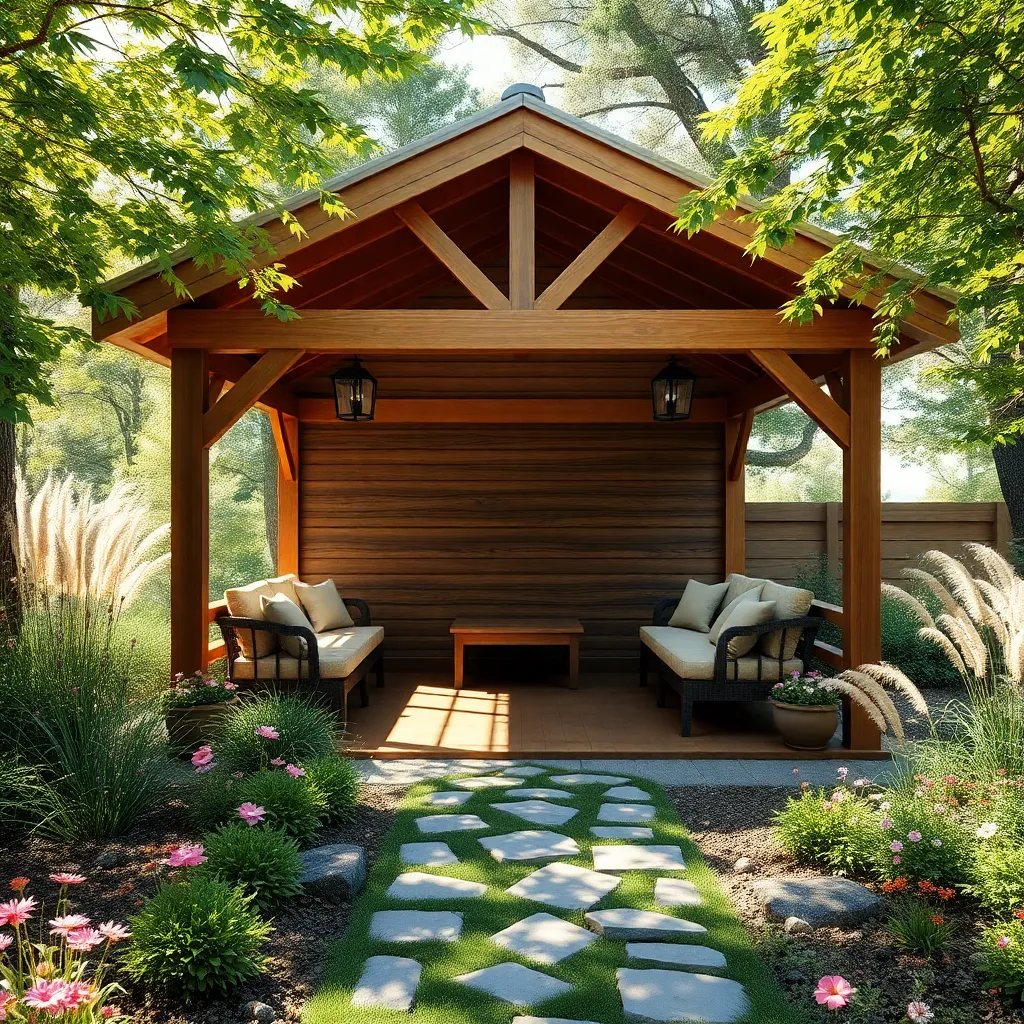
Transform your backyard with a rustic wooden gazebo, an inviting space that provides both shade and charm. Start by choosing durable wood like cedar or redwood, which are naturally resistant to rot and insects. Measure your space and plan for a gazebo size that comfortably fits your needs—typically, a 10×10-foot structure is ideal for most yards. Ensure you have a solid foundation by using concrete footings or pavers to support the weight and prevent shifting.
For design, use simple, rustic elements like exposed beams and a shingled roof to enhance the natural aesthetic. When constructing, begin with a sturdy frame and use galvanized screws or bolts for long-lasting joints. Consider adding personal touches, such as a built-in bench or hanging lanterns for a cozy atmosphere. For those experienced with woodworking, incorporating lattice panels or decorative trims can add both privacy and a touch of elegance. With careful planning and attention to detail, your rustic gazebo will become a cherished outdoor retreat.
Employ Adjustable Louvered Roofs
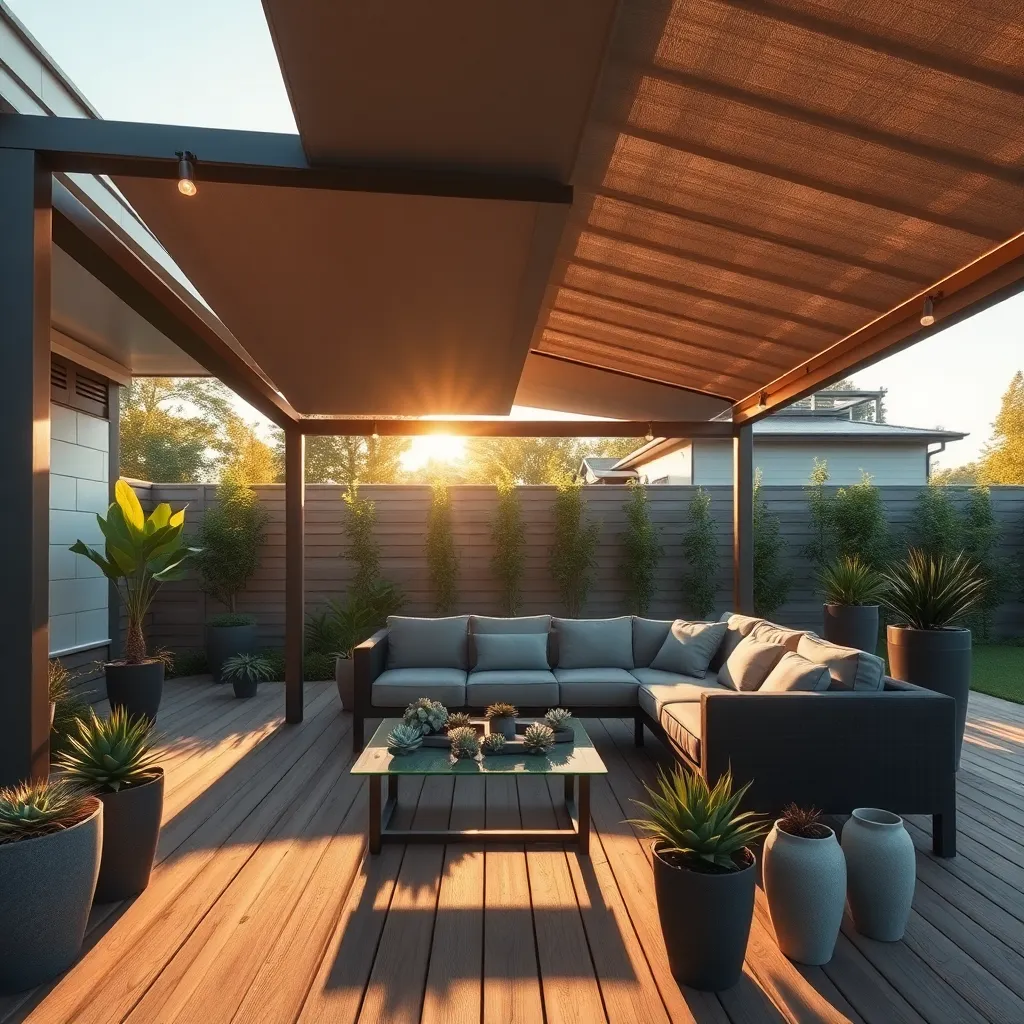
Consider employing adjustable louvered roofs to enhance the flexibility and functionality of your outdoor space. These structures offer the unique advantage of controlling sunlight exposure and ventilation, making them ideal for various weather conditions. Constructed from durable materials such as aluminum or weather-resistant wood, the louvers can be easily adjusted to provide shade or let in sunlight, depending on your needs. For beginners, start by selecting a basic design with manual adjustment features, while more experienced DIYers might explore automated systems that can be controlled with a remote or smart device.
To ensure a successful installation, focus on the positioning and dimensions of your louvered roof. Measure the area where you plan to install it, allowing for adequate space around the structure to ensure proper airflow and aesthetics. For a standard patio, consider a roof size of at least 10×10 feet to provide sufficient coverage. When designing your space, think about adding integrated lighting or retractable screens for extra functionality. This versatile shelter can transform your backyard into a year-round retreat, offering both beauty and practicality for entertaining or relaxing outdoors.
Create Bamboo Screen Partitions
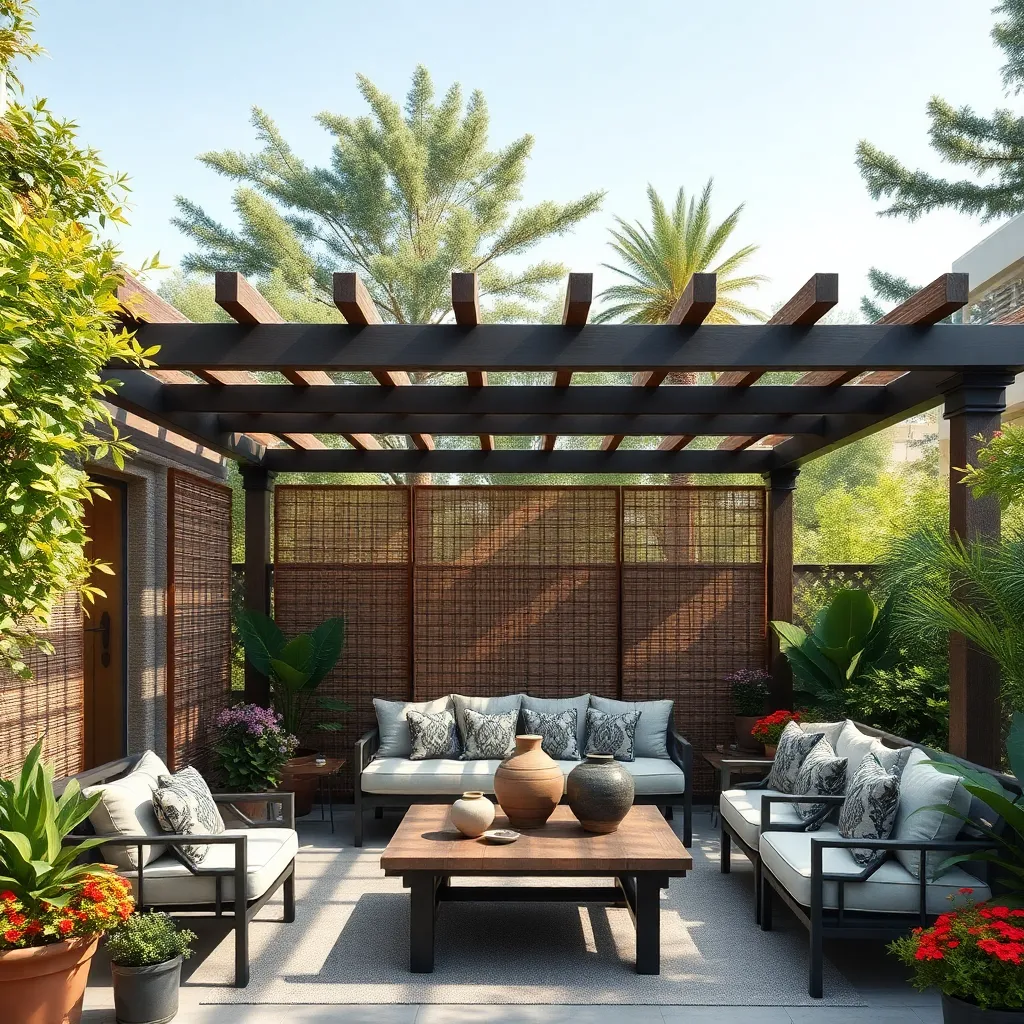
Creating bamboo screen partitions is an excellent way to add both shade and privacy to your outdoor space. Start by selecting the right type of bamboo—opt for Phyllostachys edulis (Moso bamboo) for a robust, durable option that withstands various climates. Measure your area and cut bamboo poles to your desired height, typically between 6 to 10 feet for effective coverage. Make sure to treat the bamboo with a weather-resistant sealant to prolong its life and maintain its natural beauty.
To construct your screen, drive sturdy wooden or metal posts into the ground as supports, spaced about 3 to 4 feet apart. Secure the bamboo poles vertically to these posts using durable wire or zip ties. For a more refined look, consider weaving thinner bamboo slats horizontally through the vertical poles, creating a dense, intricate pattern. This design not only enhances stability but also adds a sophisticated element to your garden. Experiment with spacing to control the amount of light and air that filters through, customizing your partition to perfectly suit your outdoor haven.
Add a Modern Metal Trellis
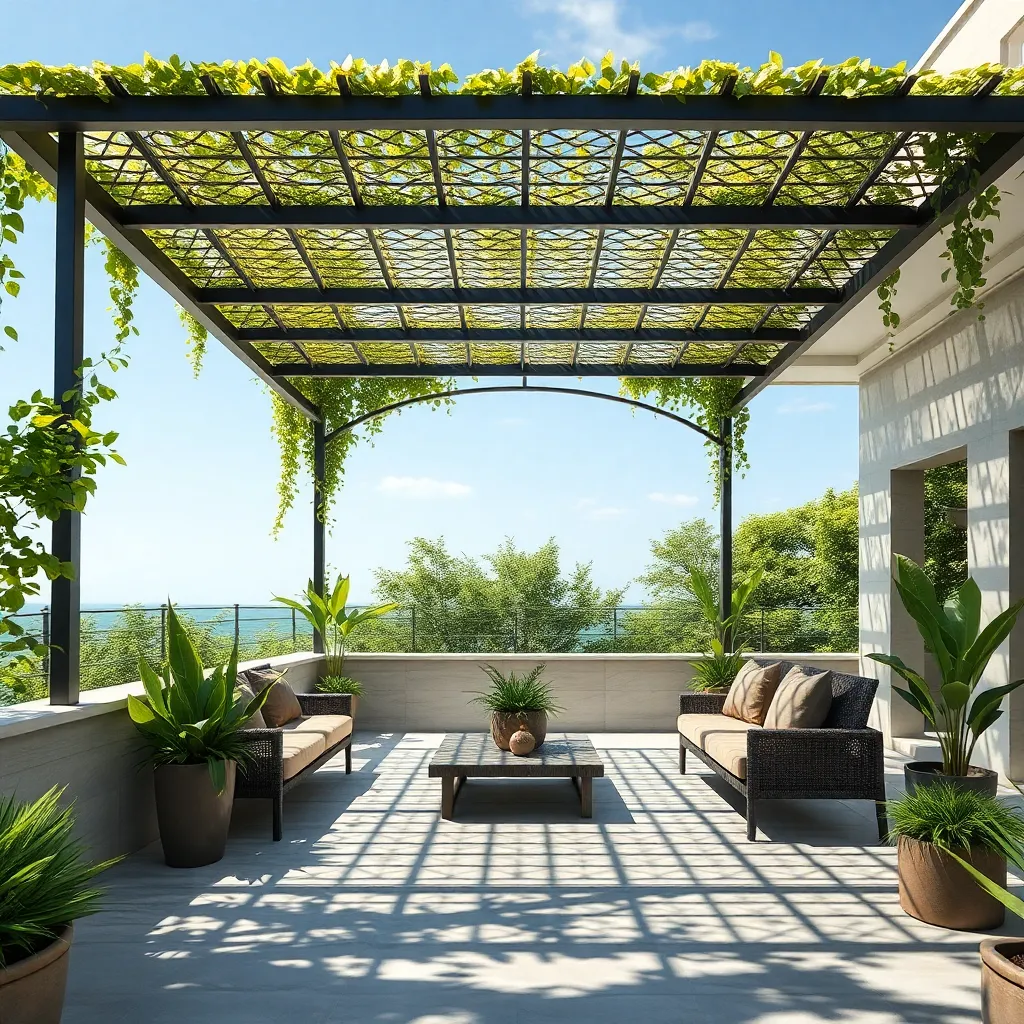
To add a modern flair to your outdoor space, consider installing a metal trellis. Choose durable materials like powder-coated steel or aluminum, which resist rust and endure various weather conditions. These metals not only provide a sleek, contemporary look but also support climbing plants like jasmine or clematis, enhancing both shade and aesthetics. For beginners, start with a simple grid design, which is easier to install and maintain.
For a more advanced project, incorporate geometric patterns or custom designs into your trellis to create a unique statement piece. Ensure your trellis is anchored securely by using concrete footing or attaching it to an existing structure for stability. Aim for dimensions that suit your space—typically, a height of 6 to 8 feet is ideal to provide ample shade without overwhelming the area. With the right design, a modern metal trellis can become a stunning focal point in your garden while offering functional shade.
Hang Artistic Sunshade Panels
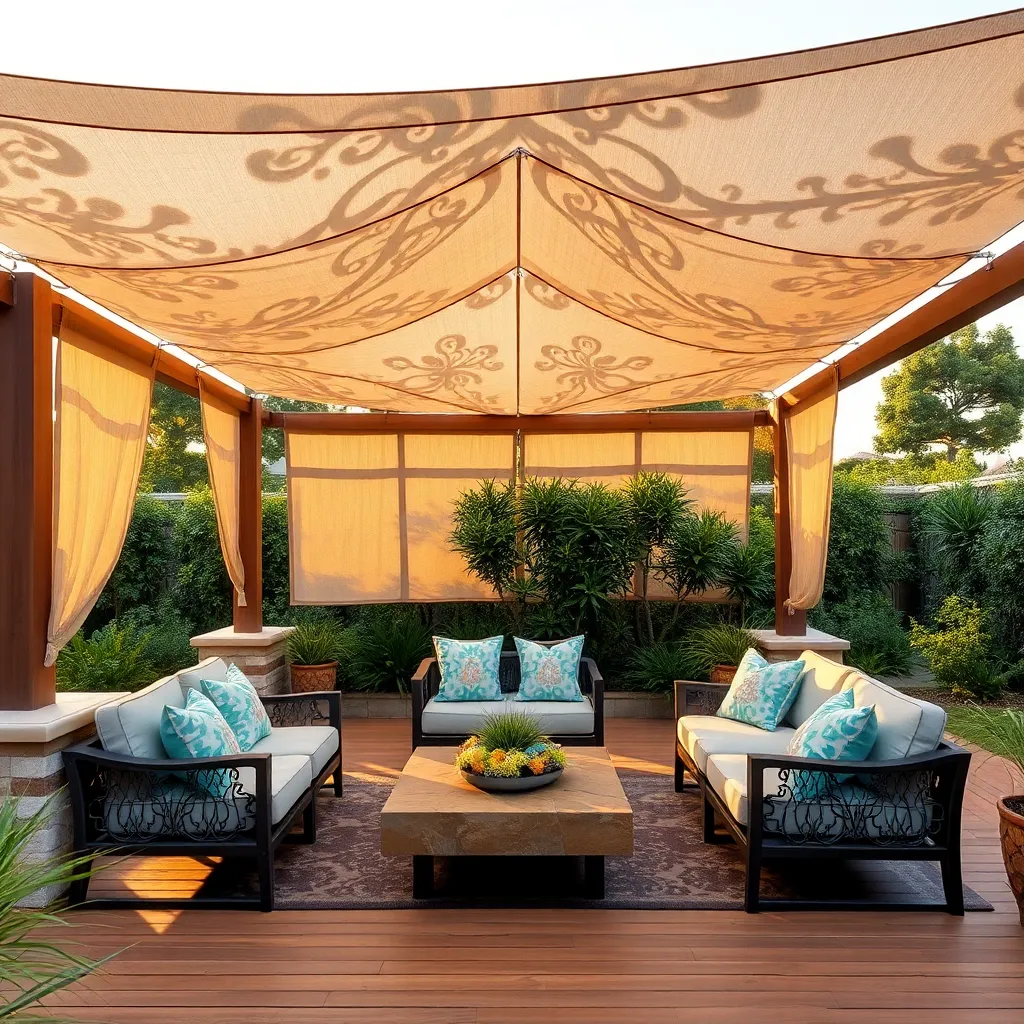
Artistic sunshade panels can transform your outdoor space into a vibrant and functional retreat. Start by selecting panels made from durable materials like weather-resistant fabric or perforated metal, which can withstand various climates. Choose designs that complement your existing outdoor decor, whether it’s geometric patterns for a modern look or floral motifs for a classic touch. These panels can be hung from pergolas, fences, or even trees, providing shade while adding a unique aesthetic element to your garden.
For a more personalized touch, consider creating your own designs using stencils and weatherproof paint on plain fabric panels. Install panels using sturdy hooks or tension wires to ensure they stay secure in windy conditions. Beginners can start with lightweight fabric panels, which are easier to handle and adjust. Meanwhile, experienced DIYers might explore custom metalwork for a more permanent installation. Experiment with varying the panel heights and angles to create dynamic patterns of dappled sunlight across your outdoor space.
Design Multi-Functional Roof Gardens
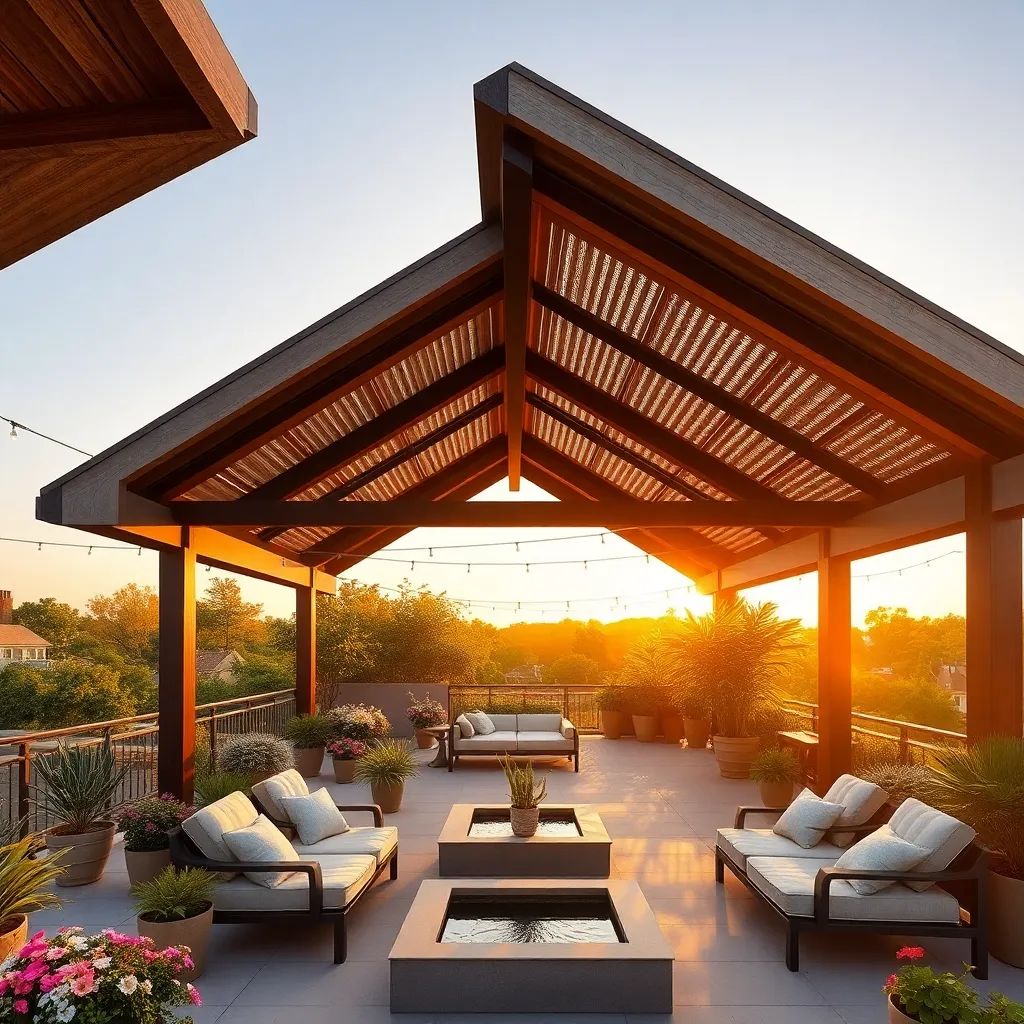
Transform your rooftop into a lush, multi-functional garden by integrating shade structures that suit both relaxation and utility. Start with a framework of durable, weather-resistant materials like treated wood or aluminum to support the garden’s infrastructure. For beginners, consider installing a pergola with adjustable slats to control sunlight exposure, which not only provides shade but also enhances the aesthetic of your garden. Advanced gardeners might opt for retractable awnings made from UV-resistant fabric, allowing flexibility in shading and weather protection.
Incorporate raised planter boxes to define spaces and add layers to your garden, using materials like cedar or composite wood for longevity and minimal maintenance. Vertical gardens on trellises or wall-mounted planters can maximize limited space and create natural shade. Ensure proper drainage and choose lightweight, drought-tolerant plants to reduce structural strain. For added functionality, integrate seating areas or small dining nooks under these shaded spots, using weatherproof furniture to promote year-round use. By thoughtfully designing with these elements, your roof garden can become both a serene retreat and a vibrant, productive space.
Use Portable Canopy Tents

Portable canopy tents are a fantastic option for creating flexible outdoor shade. These tents are typically made from durable materials such as polyester or canvas, which are both water-resistant and sturdy enough to withstand various weather conditions. For a quick setup, look for models with telescoping legs and pop-up frames, which allow you to easily adjust the height and position. Beginners will appreciate their simplicity, while experienced gardeners might explore options with additional features like sidewalls or UV protection for enhanced comfort.
For a more tailored outdoor experience, consider customizing your portable canopy with decorative elements. Adding string lights or draped fabric can enhance the ambiance and make your space more inviting. If you’re planning to use the canopy frequently, investing in a model with reinforced corners and rust-resistant frames can provide lasting durability. Remember to anchor your tent securely using stakes or weighted bags, ensuring it remains stable even in windy conditions. With these tips, you can effortlessly transform your garden or patio into a versatile and stylish retreat.
Conclusion: Creating Beautiful Outdoor Spaces
In exploring ’13 Shade Ideas for Your Next Project,’ we’ve uncovered a spectrum of relationship-enhancing concepts designed to deepen your bond and enhance mutual understanding. From effective communication strategies and the importance of shared activities to the art of compromise and prioritizing quality time, each idea serves as a crucial building block for nurturing a fulfilling partnership. By embracing active listening, practicing gratitude, and setting shared goals, you can transform everyday interactions into meaningful experiences.
As your actionable next step, choose one concept that resonates most with your current relationship dynamic and implement it today. Whether it’s planning a surprise date or engaging in a deep, honest conversation, small efforts can yield significant rewards.
To ensure you have these insights at your fingertips, bookmark this article for ongoing reference. By doing so, you’ll always have a toolkit ready to support your journey toward a thriving, resilient relationship.
Looking ahead, remember that successful relationships are built on continuous growth and understanding. With these strategies, you’re not just investing in your current relationship, but also in a future filled with love, harmony, and shared happiness. Keep these ideas close, and watch as they transform your connection into something truly extraordinary.
